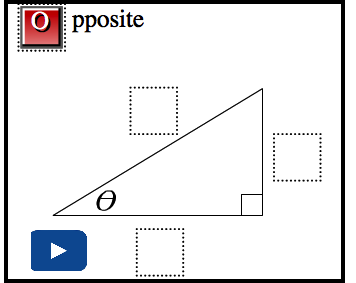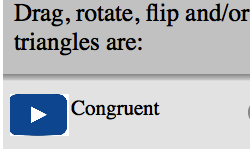Lesson 10: Solving Right Triangles and Word Problems
Created by IMSreader
Launch
Module 1: Measurement and Its Applications
This section checks to see if you have the prerequisite knowledge and skills to be able to complete this lesson successfully.
Are You Ready?
Complete these questions in your course folder (binder). If you are experiencing difficulty, you may want to use the information and the multimedia in the Refresher section to clarify concepts before completing these exercises.
1. Find the unknown length. Show your answers rounded to the nearest tenth of a metre.
a. 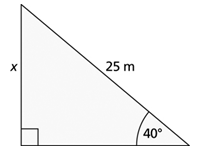
b. 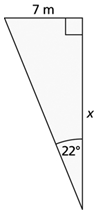
2. Find the unknown angle. Show your answers rounded to the nearest degree.
a. 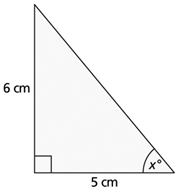
b. 
3. For each of the triangles in question 2, use the Pythagorean theorem to calculate the length of the third side. Show your answers rounded to the nearest tenth.
4. What is the difference when two shapes are said to be similar compared to when two shapes are said to be congruent?
5. The following two triangles are similar.
a. What is the measure of angle B in Triangle 2?
b. Calculate the length of c in Triangle 1. (Hint: If you do not have enough information for the Pythagorean theorem, you could use proportions.)
Once you have completed these exercises to the best of your ability, use the provided answer link to check your work.
If you feel comfortable with the concepts covered in the questions, move forward to Discover. If you experienced difficulties or want more practice, use the resources in Refresher to review these important concepts before continuing through the lesson or contact your teacher.
![]() Refresher
Refresher
In this lesson you will be using the trigonometric ratios and the Pythagorean theorem to solve problems you encounter in your everyday life. These problems will all involve right angle triangles. Do you remember what makes a triangle a right angle triangle?
“Space and Shape: Trigonometry” provides a good review before you begin problem solving. On the right-hand side of the website, click on “Interactive.” When you are finished, choose “Video.”
The video at “Space and Shape: Similarity and Congruence” shows the difference between similar and congruent shapes. For example, are stop signs congruent or similar to other stop signs? View the video to find out. On the right-hand side of the website, choose “Video.”
Once you have viewed the video, choose “Interactive.” Viewing the interactive information is a fantastic way to figure out if you are truly comfortable with congruent and similar shapes. The site allows you to move and reshape triangles to determine if they are congruent, similar, or neither when compared to each other.
Please review your work from Lesson 7 for the definition of the trigonometric ratios. You will also need to solve triangles in which two pieces of information are given and you have to find either a length or an angle. Remember the six types of solving triangles from Lesson 7.
Materials
- tape measure
- clear plastic ruler
- clear plastic protractor
- clear tape
- cotton string
- small weight (e.g., a metal washer)
You will also need the following items to complete Math Lab: Clinometer.
- 1 plastic protractor
- 1 soda straw
- 1 paper clip
- 1 toothpick or another paper clip
- 1 6–8 in (15–20 cm) length of thread
- 1 roll of fishing line or relatively inflexible string (The length depends upon use.)
- 2 pieces of tape (e.g., transparent, masking, duct)
